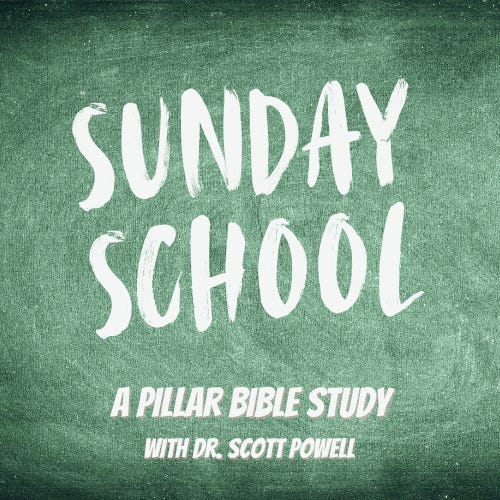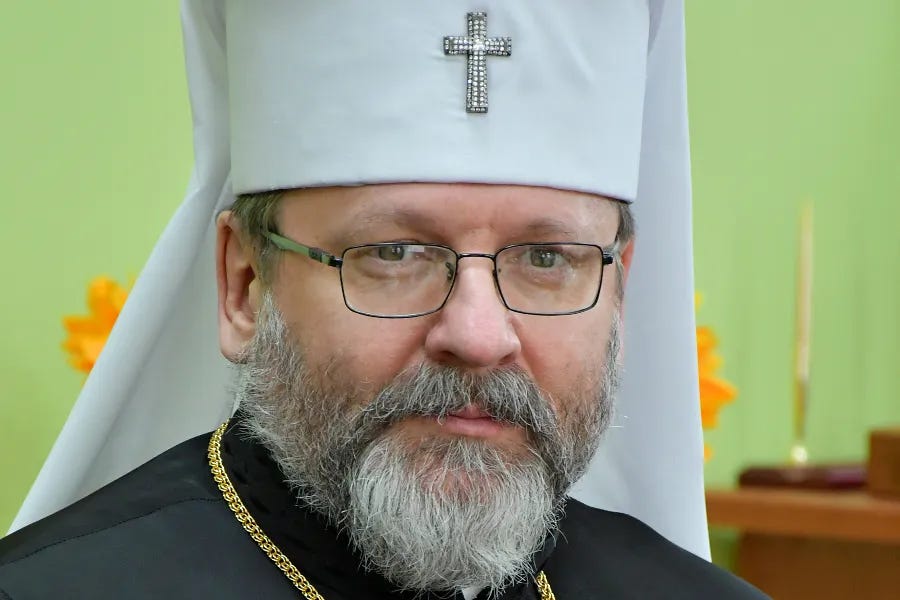Catholic and pro-life leaders in the U.S. have long championed the principle that mothers should not have to choose between their jobs and their children, with the idea of paid parental leave a key part of that conversation.
But for Church leaders — and Catholic organizations — support in principle for paid employee leave has led to variety in practical responses, with some dioceses, Catholic, and pro-life organizations offering ample paid leave after the birth of a child, and others offering little, or none at all.
Some Catholic organizations offering paid family leave told The Pillar that the decision can be financially feasible, but requires a leadership decision to make it happen.
The possibility of a national paid family leave program has made headlines repeatedly in recent years, with various proposals floated by members of Congress – most recently in Build Back Better legislation being debated by national lawmakers this month.
The majority of American workers did not have access to paid family leave in 2018, making the U.S. an outlier among developed nations, many of which have national paid family leave legislation.
The federally-mandated Family and Medical Leave Act (FMLA) requires organizations of 50 or more employees to give job-protected, unpaid leave for 12 weeks after childbirth. But organizations with fewer than 50 employees are not required to offer unpaid leave for new parents, leaving new moms and dads to rely on vacation time or sick days they may have accrued at their organizations.
A review of diocesan employee handbooks, and contact with other Catholic and pro-life organizations, suggests a patchwork of differing policies on the ground – ranging from several weeks of paid leave, to unpaid leave, to nothing at all.
The Archdiocese of St. Louis, for example, lists 20 days of paid leave in its employee handbook, and the Diocese of Madison lists two weeks. The Archdiocese of Milwaukee and the Diocese of Lansing each confirmed through a spokesperson that the entirety of employee parental leave is unpaid, although the Lansing diocese told The Pillar it is exploring the possibility of paid leave.
Catholic Charities USA declined to comment on its parental leave plan, while Catholic Charities of St. Louis and Catholic Charities of Louisville both have policy manuals online indicating 10 days of paid employee parental leave. Catholic Charities of Albuquerque and Santa Fe appears to offer no specific parental leave, and requires that available vacation time is used during time allotted the Family Medical Leave Act.
Catholic Charities agencies contacted by The Pillar declined to comment on their parental leave policies, as did the dioceses of St. Louis and Madison. Several other Catholic and pro-life organizations – including the U.S. Conference of Catholic Bishops and the March for Life - also declined to share details of their parental leave policies.
In 2015, the president of the March for Life said she wished the organization could offer a “generous maternity/paternity leave package,” but that the idea was not feasible with a staff of just four full-time and two part-time employees. It is not clear whether the policy has changed as the organization has grown.
The Catholic University of America offers eight weeks of paid parental leave, but if both parents work for the university, they are limited to splitting eight weeks between the two of them.
While Catholic and pro-life organizations take a patchwork approach, many American corporations have expanded paid parental leave policies in recent years, recognizing that they foster employee loyalty and assist with recruitment and retention. And since 2020, federal full-time or part-time employees can be eligible for up to 12 weeks of paid family leave after the birth or adoption of a child.
From a human standpoint, studies have found that maternity leave is linked to a decreased risk of postpartum depression, a lower infant mortality rate, and more success in breastfeeding.
So why don’t more Catholic or pro-life organizations offer paid parental leave to their employees?
Patrick Brown, a fellow at the Ethics and Public Policy Center whose work focuses on family policy, said the answer ultimately comes down to finances.
Brown said his research has led him to believe public policy needs to have some role in paid leave, because of the financial difficulty small businesses and nonprofits face when offering paid leave, and the necessity of paying new parents.
“For the most part, Catholic organizations and pro-life organizations feel very strongly about the importance of a strong family life,” Brown told The Pillar.
“On the level of generalities, everyone’s on board. But the question is . . . how do you make family leave viable, especially when you’re a non-profit? Or running on a skeleton staff? Or in a diocese where a financial situation is getting worse and worse?”
Paying an additional employee while one employee is out for 10 or 12 weeks can be a difficult financial decision for a diocese, Brown said.
“It’s really tough. Asking a diocese to pay an additional salary while that worker is not able to participate or contribute, for an obviously very good reason, is just a real burden,” he said. “And that leads...many dioceses to do beneath the bare minimum of what they should be doing.”
Catherine Kinsey told The Pillar she has encountered the difficulty of that “bare minimum” standard.
When Kinsey first informed her employer about her pregnancy, colleagues celebrated the news alongside her. But when she approached the human resources department about maternity leave, it was a different story.
“They said they didn’t really have maternity leave. They said they would give me the option to take unpaid leave, and I could use sick days,” Kinsey said.
That employer? Right to Life Michigan, where Kinsey worked as the Education and Events Coordinator.
“I was hoping at first they would work with me to maybe go down to part-time,” Kinsey said. “They weren’t flexible with that, either.”
Ultimately, Kinsey decided it would not make financial sense for her to keep working.
“It was a pretty big deal . . . after that many weeks of not getting paid, and then so much of my paycheck would have to go to childcare. And after not even having the ability to save up over the time that I was off, it was not adding up for me,” Kinsey said.
A spokesperson for Right to Life of Michigan stressed to The Pillar that it offers a five-day paid parental leave program, and that employees have the option to use their sick and vacation days to extend their leave. Kinsey said she did end up utilizing that paid week, but said it felt like an afterthought, not a real solution to her family’s needs.
“I remember being in the midst of it all and just wishing I didn't have to be in a position in the first place where I had to fight for myself and have those hard conversations with my employer, and thinking that in a perfect world, a pro-life organization would be the last place where a young mom would have these conflicts,” Kinsey said.
But some Catholic employers have found ways to make it work. The Diocese of Raleigh offers up to 12 weeks of paid parental leave, a policy instituted in July 2018.
“We wanted to really support the families, and make it so that people didn’t have to choose between whether they had to rush back to work or take care of a baby just to be able to pay their bills,” Maureen House, human resources manager at the Raleigh diocese, told The Pillar.
“We wanted to show care and honor the family, because in the Catholic Church, the family is so important. We really looked at the tenets of social justice and making sure that people did not have to choose to go back to work right away.”
In his 1991 encyclical letter Centesimus annus, St. John Paul II wrote that “Unfortunately, even today one finds instances of contracts between employers and employees which lack reference to the most elementary justice regarding the employment of children or women.”
House told The Pillar that when her diocese announced the paid leave plan at an orientation for Catholic school teachers, the room broke into cheers.
In addition to being well-received, House said, the policy was not actually that difficult to implement, and from a financial perspective, the diocese did not see a huge increase in the budget.
“In the past three years, we’ve shown that the concern from a financial standpoint has not had the negative impact [people] were worried about,” she said.
The Diocese of Phoenix and the Archdioceses of Chicago, Seattle, and Baltimore are also among dioceses boasting paid leave plans.
Marian Enriquez, director of human resources for the Diocese of Phoenix, said that all full-time employees of the diocese are eligible for three weeks of paid parental leave.
“We kept talking about how we want to support those who are called to the vocation of motherhood or fatherhood. In order for us to really walk the walk, we saw that it was important to provide that additional layer of time that is paid,” Enriquez said.
Enriquez said paid family leave was a decision that came down to leadership.
“The budget is a let’s make it happen situation,” she said. “The diocese just made it a focus. It all has to come from the leadership. If this is important in our mission, the leadership wanted to find a way to make it happen.”
Enriquez acknowledged that three weeks is a relatively short period of time for parental leave. She said the diocese also tries to offer other means of assistance, like a short-term disability policy, in order to see employees access additional paid leave without straining the diocesan budget beyond its capacity.
She also said that in her experience speaking with other human resources representatives from dioceses, paid parental leave appears to be “rare.”
Both House and Enriquez emphasized that parental leave was an employee retention decision as well.
House said that deciding to offer paid parental leave may seem intimidating to organizations, but with some creativity and determination, it is often more doable than those organizations may think.
“I would recommend looking at your current leave, and how it’s utilized,” House said. “Try to run scenarios to see what you could do, and where there’s a lack of coverage, and then create a model that you could at least run numbers on . . . you might be surprised that it might have more benefit, and less negative impact, than you’re expecting.”





